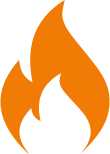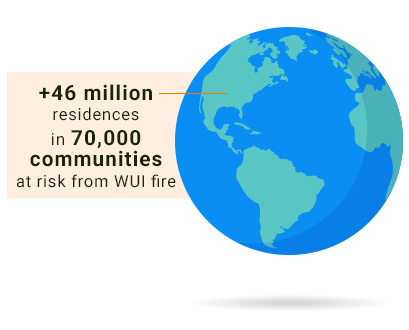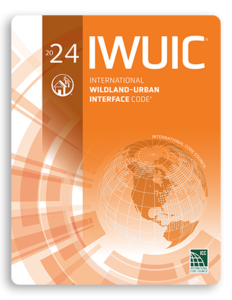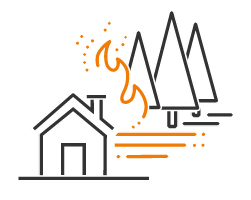
Fire-Resistant Construction in the Wildland‑Urban Interface
Today's wildland fires are more frequent, larger and more intense than in the past. More than 46 million homes, with an estimated value of $1.3 trillion, in 70,000 communities are now at risk from the impacts of wildfire in what’s known as the Wildland-Urban Interface (USFA, 2022). These areas pose tremendous challenges and put millions of people and their homes in danger.
Headwaters Economics reports that more than 100,000 structures have been destroyed by wildfires since 2005, resulting in an untold number of fatalities, evacuations and injuries. The International Wildland-Urban Interface Code® (IWUIC) supports community resilience and establishes minimum requirements for the safeguarding of life and property from the intrusion of fire from wildland fire exposures.
What is the Wildland-Urban Interface?
The Wildland-Urban Interface (WUI) is the transition zone between unoccupied land and human development. It is the line, area or zone where structures and other human development meet or intermingle with undeveloped wildland or vegetative fuels. Long-duration dry conditions and a changing climate have increased the number and intensity of fires in the WUI, and the WUI area continues to grow by approximately two million acres per year.



Listen to ICC Pulse Podcast Episode 47
Living with Fire: How Wildland-Urban Interface Fires Impact Everyone
Experts discuss wildfires in the WUI, debunk misconceptions and highlight how at-risk communities can become more fire-adapted. Learn about how planning, preparedness and building to modern codes can help mitigate wildfire damage
Wildfire Risks in the Built Environment
Explore the critical issues surrounding national wildfire risks and their impact on the built environment. This presentation, hosted by the International Association of Fire Chiefs, features expert discussions on the national wildfire problem, community response and mitigation strategies, and the adequacy of local codes in addressing increased wildfire risks.
Learn More About Mitigating Fire Risk in the Wildland-Urban Interface
What is the International Wildland-Urban Interface Code® (IWUIC)?
The IWUIC establishes requirements for land use and the built environment within designated WUI areas using prescriptive and performance provisions.
Which Areas Are Most at Risk for Wildfires?
To mitigate their risk to wildfires, communities must develop and update Community Wildfire Protection Plans to ensure the planning and implementation of resilient construction and landscapes.
Resources for Calculating Wildfire Risk in Your Area
There are various resources that measure wildfire risk, allowing communities to analyze and understand their risk to guide their preparedness, including interactive maps and charts.
Wildfire Codes and Standards Protect Property and Help Save Lives
According to FEMA, adopting and effectively implementing up-to-date building codes is the most effective community mitigation measure. The Wildland Fire Mitigation and Management Commission’s 2023 report recommends adopting the IWUIC to enhance community resilience.
The International Code Council works with governments at all levels to advocate for fire-resistant construction in communities at-risk for wildland fire. You can help too, by learning more about our wildland fire codes and standards that help increase a community's resilience to wildland fire.
Contact Your Local ICC Government Relations Representative for More Information on Adopting the Wildland-Urban Interface Code





